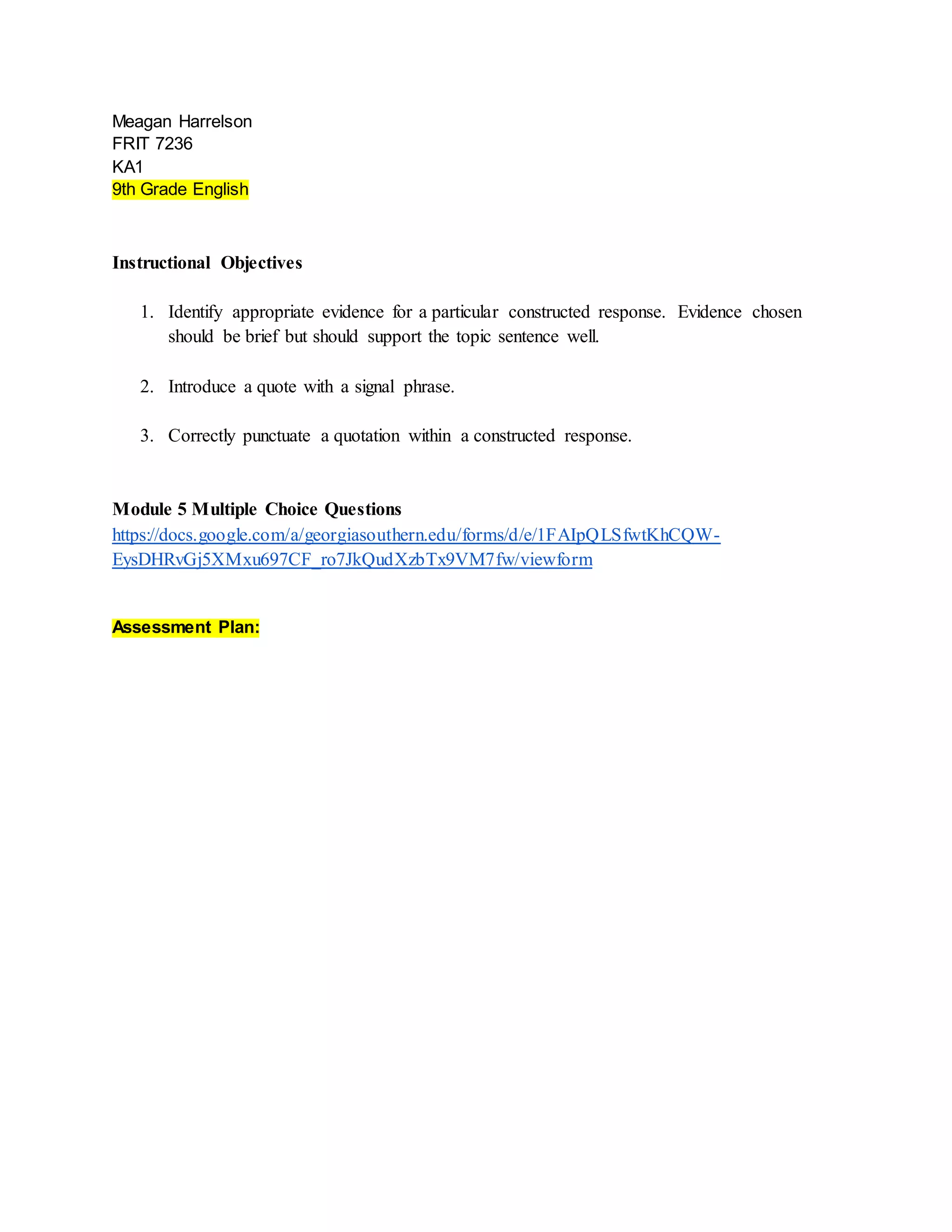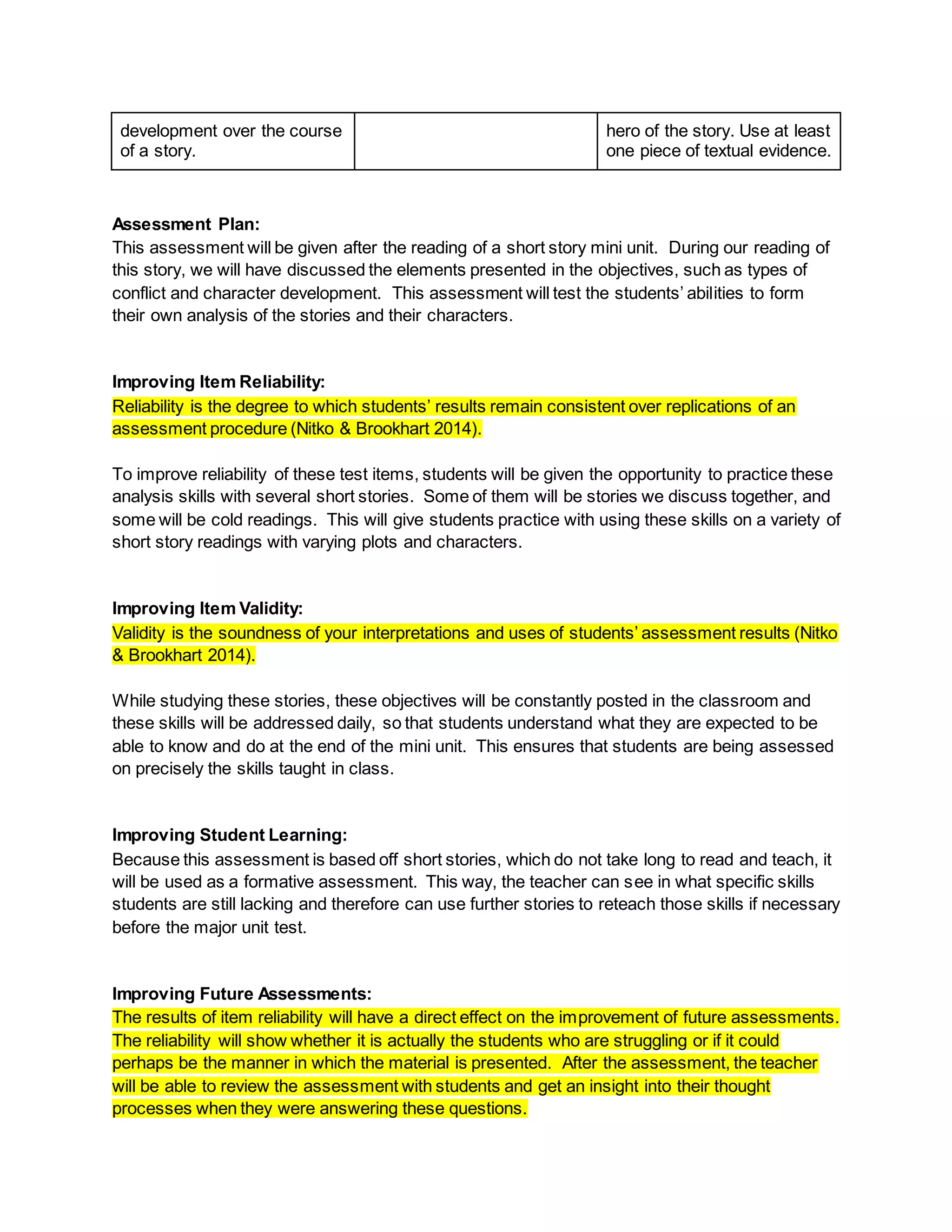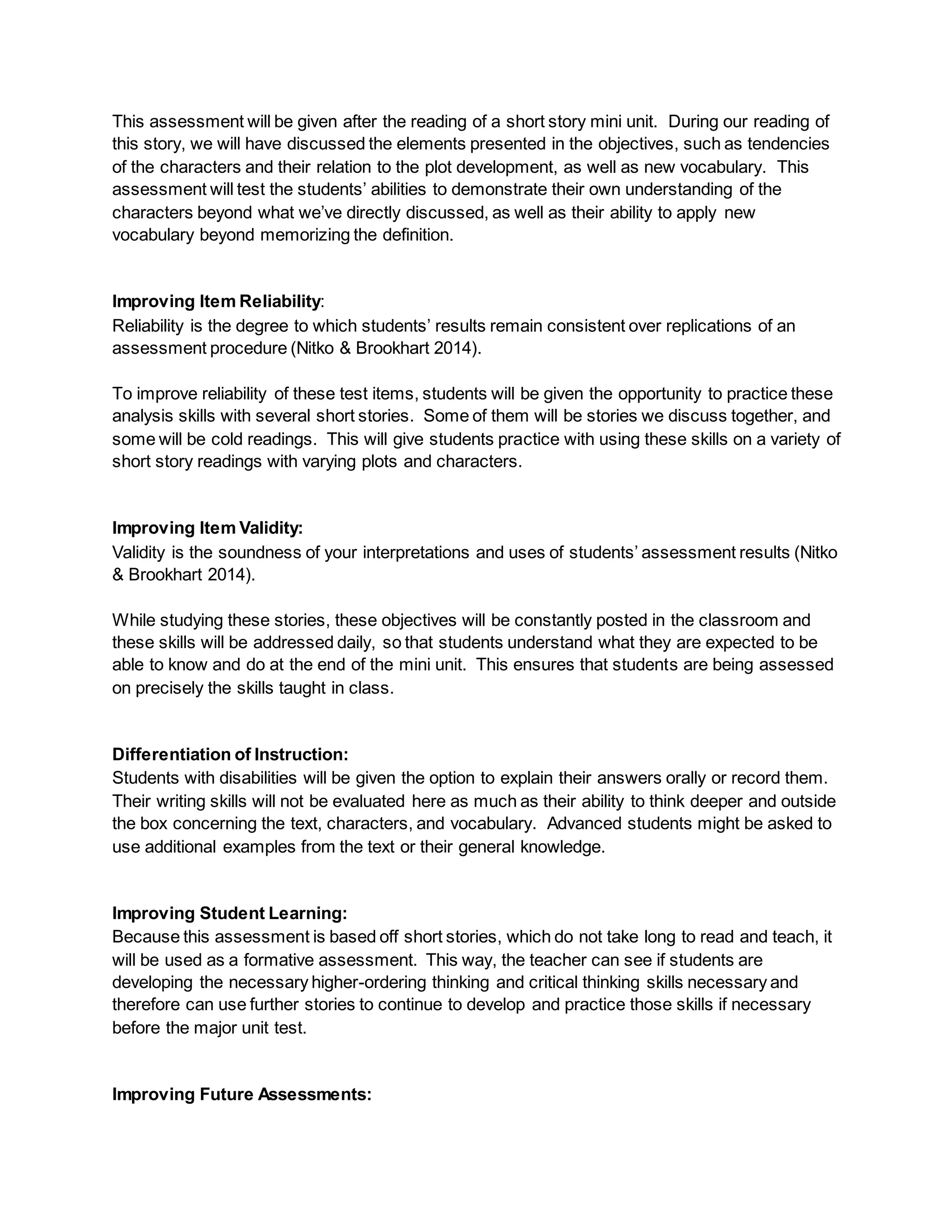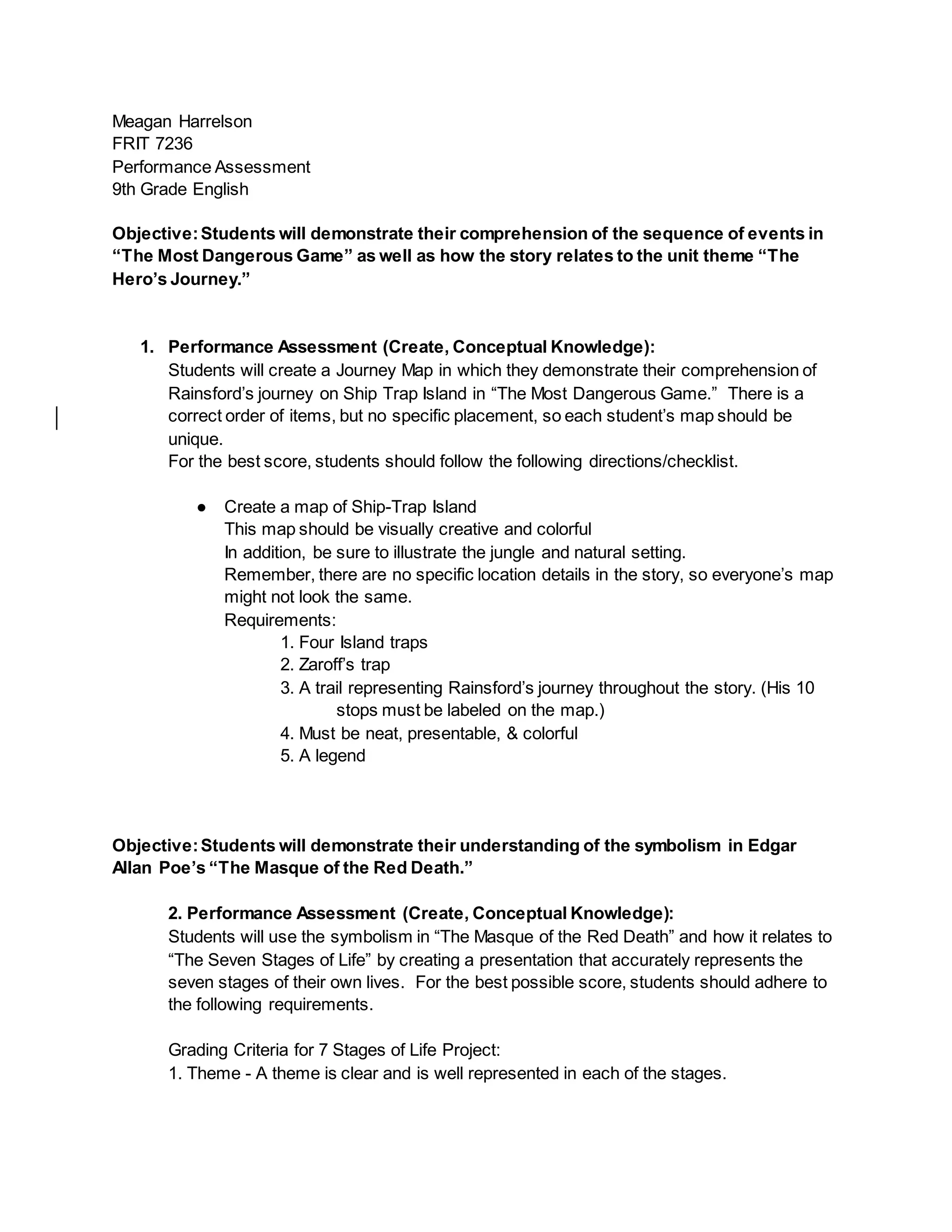This document outlines three performance assessments for 9th grade English students. The first asks students to create a map demonstrating their comprehension of the plot of "The Most Dangerous Game" by illustrating the main character's journey. The second requires students to represent the seven stages of their own lives using symbolism from "The Masque of the Red Death." The third involves students creating a poster explaining how a hero from a movie encounters the 12 stages of the hero's journey. The assessments are designed to evaluate students' understanding of stories, symbolism, and literary concepts.

![Meagan Harrelson
FRIT 7236
Short Answer and Essay
9th Grade English
Common Core Standards:
● Cite strong and thorough textual evidence to support analysis of what the text says
explicitly as well as inferences drawn from the text. [RL.9-10.1]
● Analyze how complex characters (e.g., those with multiple or conflicting motivations)
develop over the course of a text, interact with other characters, and advance the plot or
develop the theme. [RL.9-10.3]
● Produce clear and coherent writing in which the development, organization, and style
are appropriate to task, purpose, and audience. [W.9-10.4]
Objectives: Level and Type: Short Answer Questions:
Students will be able to
analyze the type of conflict
presented by a main
character and how it relates
to the plot.
Analyze
Conceptual Knowledge
How does internal conflict
affect Rainsford’s ability to
survive?
Students will be able to
analyze the type of conflict
presented by a main
character and how it relates
to the plot.
Analyze
Conceptual Knowledge
How does external conflict
affect the climax of the story?
Students will be able to
analyze why a narrator is
either reliable or unreliable.
Analyze
Conceptual Knowledge
How is Montresor an
unreliable narrator? Give two
reasons and explain them.
Essay Questions
Students will be able to
analyze the type of conflict
presented by a main
character and how it relates
to the plot
Analyze
Conceptual Knowledge
Analyze the role that internal
conflict plays in the story and
describe how it determines
the fate of the main
character. Use at least one
piece of textual evidence.
Students will be able to
analyze character
development over the course
of a story.
Analyze
Conceptual Knowledge
Analyze how the main
character’s role changes from
the beginning of the story to
the end. Use at least one
piece of textual evidence.
Students will be able to
analyze character
Analyze
Conceptual Knowledge
Analyze how the main
character develops into the](https://image.slidesharecdn.com/9ulbdrgmri6dinoenfg0-signature-250b03726777f775369cf58431675ac24d6a3f6c59cb923a8c8fa8bca396738c-poli-171106182618/75/Harrelson_KA1-2-2048.jpg)


![Meagan Harrelson
FRIT 7236
Higher-Order Thinking
9th Grade English
Common Core Standards:
● Analyze how complex characters (e.g., those with multiple or conflicting motivations)
develop over the course of a text, interact with other characters, and advance the plot or
develop the theme. [RL.9-10.3]
● Apply knowledge of language to understand how language functions in different
contexts, to make effective choices for meaning or style, and to comprehend more fully
when reading or listening. [L.9-10.3]
Objective 1:
Demonstrate a deep understanding of the main characters and author’s choices concerning
their roles in the story. (Analyze Conceptual Knowledge)
Question 1:
Consider the discussion that Rainsford and Whitney had at the beginning of “The Most
Dangerous Game.” How might the theme of the story be different if Whitney had been the one
stranded instead of Rainsford?
Question 2:
Rainsford struggles with an internal conflict near the climax of the story. Why is his decision
critical to the plot development? How might the climax have been different if he chose to stay?
Objective 2:Demonstrate understanding and ability to use new vocabulary in multiple contexts.
(Analyze Conceptual Knowledge)
Question 3: How might Darla differ from an avaricious person when planning her budget?
AssessmentPlan](https://image.slidesharecdn.com/9ulbdrgmri6dinoenfg0-signature-250b03726777f775369cf58431675ac24d6a3f6c59cb923a8c8fa8bca396738c-poli-171106182618/75/Harrelson_KA1-5-2048.jpg)



![2. 7 Stages - All 7 included and are accurate to the correct time period and color. Each
stage represents you as an individual.
3. Examples - There are 5-6 examples per stage that represent you. These can be
pictures, music, video, etc.
4. Medium - Your project is presented using a clear medium such as Prezi, poster board,
video, etc.
5. Creativity - Your project is creative and is unique to you.
6. Neat/Presentable - Your project is neat and easy to understand.
Objective:Students will demonstrate their understanding of the stages of a hero’s
journey in literature and film.
3. Performance Task (Create, Conceptual Knowledge):
Students will choose any [school appropriate] movie that involves a “hero” and create a
poster that explains how that hero encounters the 12 Stages of the Hero’s Journey.
There
should be a picture that represents the movie and/or hero in the center of the poster,
with
a labeled explanation of each stage circling the picture.
Assessment Plan:](https://image.slidesharecdn.com/9ulbdrgmri6dinoenfg0-signature-250b03726777f775369cf58431675ac24d6a3f6c59cb923a8c8fa8bca396738c-poli-171106182618/75/Harrelson_KA1-9-2048.jpg)